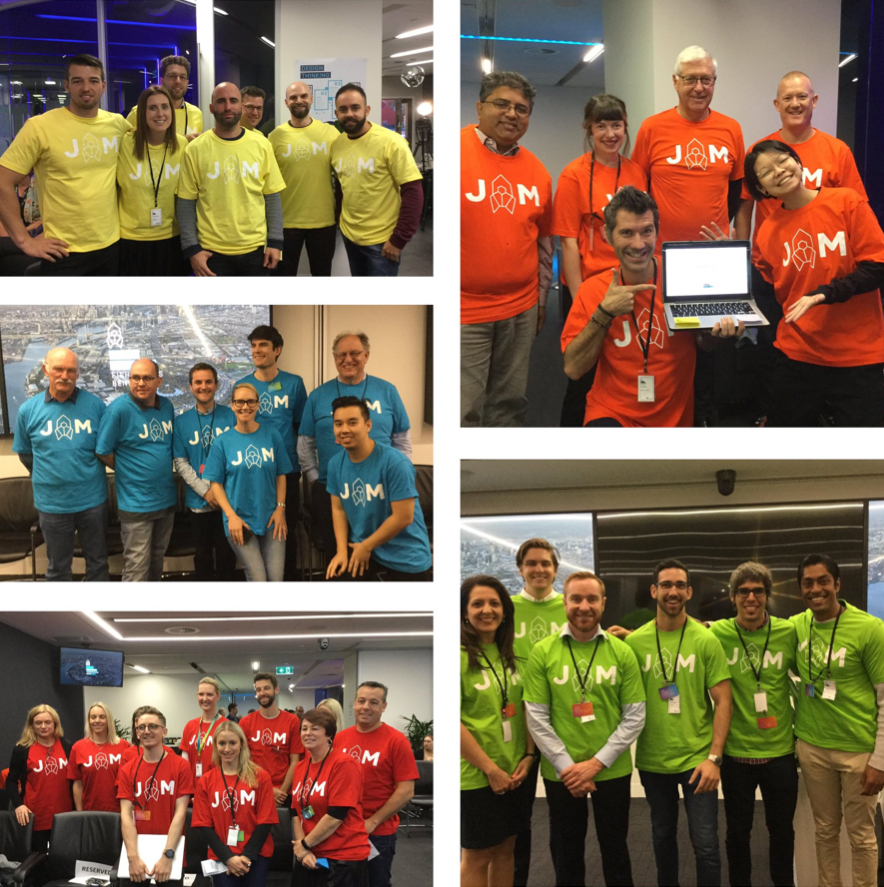Fishermans Bend Ideas Jam: Design thinking in action
“It only took us two days to solve the problem and get stakeholder buy in,” said no bureaucrat ever.
That statement was true until about 12.30 pm on Thursday 11 May, when Adam Fennessy, Secretary/CEO of Victoria’s Department of Environment, Land, Water & Planning (DELWP), reflected on the outputs of the Fishermans Bend “Ideas Jam” 2017. "These teams have achieved in two days what would normally have taken us months," he said.
The Ideas Jam was a hackathon hosted by DELWP to develop innovative ideas for Fishermans Bend, the site of Australia's largest project in urban renewal – an approach that reimagines and unlocks existing areas for jobs, investments, and housing. Located immediately adjacent to Melbourne’s existing central business district, by 2050, the precinct will be home to 80,000 residents and welcome more than 60,000 workers. In essence, it is a once-in-a-lifetime opportunity to deliver an exemplar of the type of cities that we aspire to – but realising that possibility will require us to break the inertia of a business-as-usual approach.
In answer, the Ideas Jam used design thinking as its methodology. Design thinking is a planning process that focuses not on the problem at hand, but on people and solutions instead. It allows participants to “sit” with the problem to understand it, and brings multiple perspectives into the solution phase. It then emphasises rapid formation of prototype solutions with a focus on feedback and learning rather than detail, which can come later. And it works.

Delivered by tech sector innovation experts including Telstra, which provided the location, participants in the Ideas Jam came from agencies, community, commercial businesses, and not-for-profits with an interest in the precinct. CRCWSC was fortunate enough to be invited to join, and I was pleased to participate as part of the Sustainability Challenge team. Over two days, five themed teams tackled one big question each to come up with bold new ideas.
And bold they were. Perhaps the most radical? An idea from the Open Space team for a “new democracy” for allowing current and future generations to participate in the collaborative process of designing public open spaces throughout Fishermans Bend. By combining traditional voices elicited through our tried and tested consultation methods with new sensing and interactive technologies, a much richer dialogue could be possible, leading to better open space designs. Suffice it to say that this sort of idea does not occur spontaneously.
Synergistically, the same design thinking process is also used by the CRCWSC in our Research Synthesis program, underscoring that the workshops we provide to industry and government harness best practice approaches – it’s perhaps unsurprising, then, that the CRCWSC program has delivered equally bold ideas for Water Sensitive Cities.
The CRCWSC process is based on two distinct but linked premises: design thinking (identical to that used in the Ideas Jam process); and creating conversations between researchers and end users to unlock opportunities that lie in the new knowledge created by the CRCWSC. Together these features provide a point of difference: design thinking inspired by the latest research.
To date, the CRCWSC has delivered 15 such synthesis projects, creating designs for greenfield and infill urban developments, whole cities, business cases and planning policies. But what has really emerged is a new way to plan, engage, and innovate to deliver Water Sensitive Cities.
For more information on CRCWSC Research Synthesis, see here.